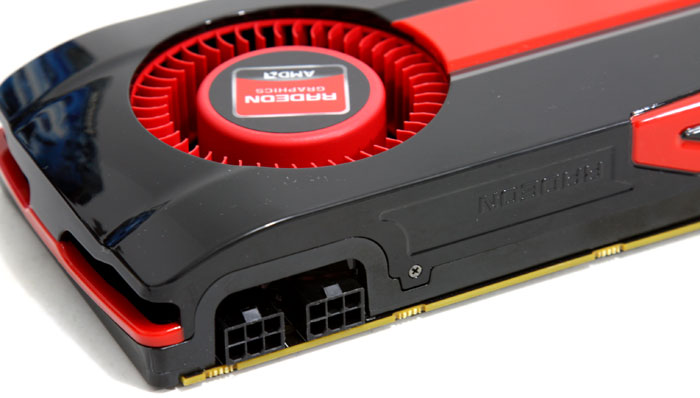Product Showcase

Here we can see the backside, the card will fit pretty much any chassis as its 27cm in length. The backside of the PCB shows a very non-complex design, that's typically a very good sign.

Crossfire-- you can pair two, three or even four cards in one PC and have them do a decent workout. Crossfire is setting the same cards up in multi-GPU mode, and CrossfireX is mixing different cards say 6970 and 7970 and set them up in Crossfire mode.
If you peek to the right of the PCB on the photo in-between the 1 and 2 position you'll notice a Switch, it's actually a Dual BIOS toggle switch. Setting two returns the card to factory default, setting 1 is an unprotected 'performance' mode which allows you to overclock and tweak. Putting it on Mode 2 actually lowered power consumption a few watt more.

The R7950 has a maximum power consumption of roughly 200 Watts, our measurements actually show numbers below that value. The boards overall power consumption from idle to load is excellent really. At default AMD PowerTune settings you can deduct 20% from the maximum board power, and that results in a 160W TDP.

You will need to hook the card up to your power supply with a 6-pin and 8-pin PCIe PEG connector. We recommend a 550W power supply to start with, with one card of course.
